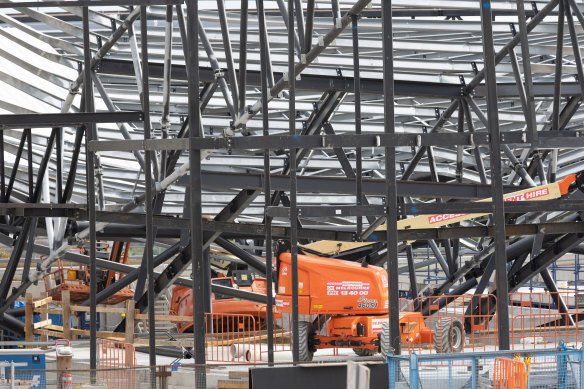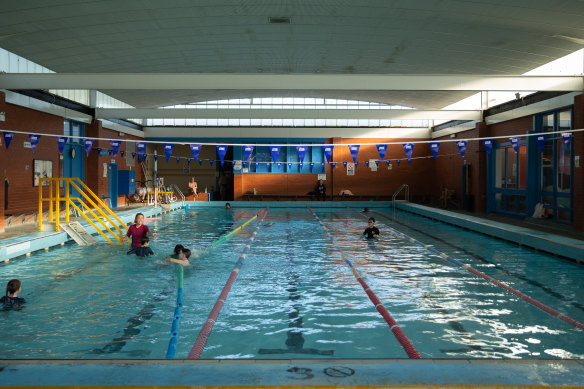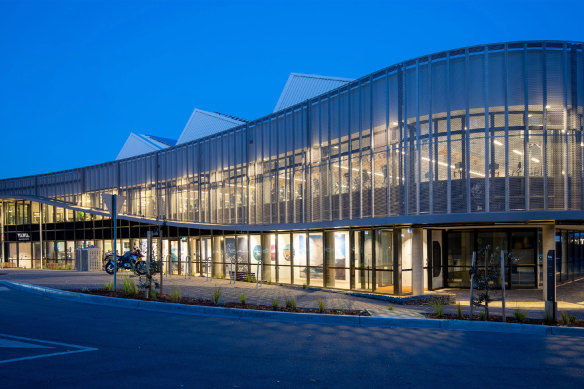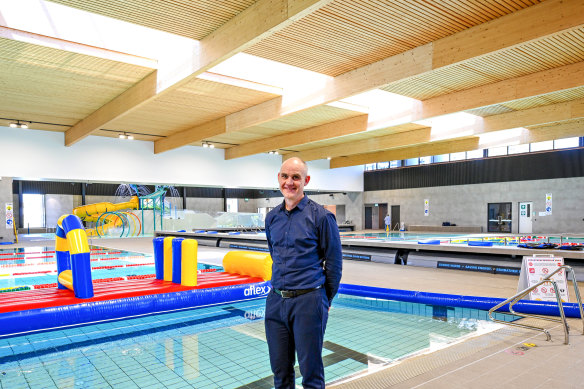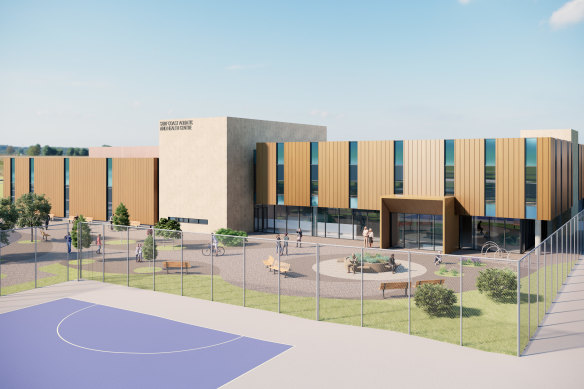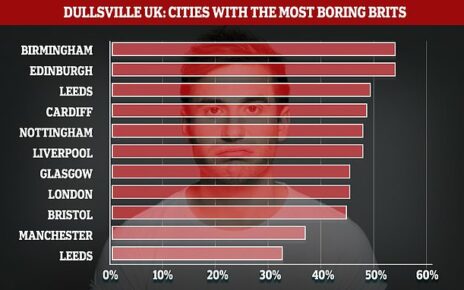Save articles for later
Add articles to your saved list and come back to them any time.
Key points
- The designs of aquatic centres are becoming large and increasingly extravagant which experts say are too costly for ratepayers, taxpayers and the environment.
- According to a study by Royal Life Saving Australia local governments in Australia will need to replace up to 40 per cent of their public aquatic facilities at a cost of over $8 billion, in the next decade.
- Warren and Mahoney architect Brett Diprose, whose firm designed the new Northcote pool, said aquatic centre designs need to be more environmentally and financially sustainable.
When the roof of the $73 million Kew Recreation Centre collapsed last October, the boom echoed through the streets of the leafy suburb in Melbourne’s east.
As well as creating a headache for Boroondara Council and triggering Worksafe and Victorian Building Authority investigations, the collapse raised questions about whether large, expensive aquatic developments are necessary.
The roof collapse of the Kew Recreation Centre last year.Credit: Jason South
“It’s just over the top what they were trying to build,” Kew resident Maree Williams said.
A similar story is playing out across Melbourne as councils struggle with the complexities of building large and increasingly extravagant aquatic centres.
Experts say these projects are costly for ratepayers and taxpayers, and can have a negative impact on the environment.
Initial media reports about the Kew Recreation Centre collapse pointed to issues with builder Adco’s imported steel from Qatar. However, Adco has since denied any fault, blaming the collapse on “design-related issues” by architects Williams Ross. The architects have also denied any fault.
Derek Harbison, director of Negawatt Projects, an energy consultancy that works with councils to improve their energy use, said councils were “walking into a minefield” when embarking on large-scale pool developments.
Plans for the state-of-the-art Kew Recreation Centre – which will be among five aquatic facilities in the municipality when it is finished – include onsite childcare, fitness areas for “noisy” and “quiet” exercise groups, two indoor sports courts, and a party room.
Daniel Freer, the council’s director of places and spaces, said the new Kew facility was designed for the area’s diverse and ageing population.
He said the final cost of the project, which includes $2 million in state funding, “cannot be determined at this time.”
Councils are investing in pool infrastructure projects as existing leisure centres, many of which were constructed ahead of the 1956 Melbourne Olympics, reach the end of their lifespans.
The 50-year-old Laverton Swim and Fitness Centre will be decommissioned like many ageing facilities in Melbourne.Credit: Simon Schluter
According to a study by Royal Life Saving Society Australia, local governments around the country will need to spend $8 billion replacing up to 40 per cent of their public aquatic facilities over the next decade. The report found that attending aquatic centres improved residents’ mental and physical health, and reduced their risk of drowning.
However, councils face significant community pressure to keep pools open.
Last month, Yarra Ranges Council decided to close its 50-year-old Kilsyth Centenary Pool. It is now looking for funding for a new aquatic centre in Lilydale. A council spokesperson said the large facility would provide the services “people expect these days”.
This approach is not uncommon, with many councils replacing older swimming facilities with larger spaces that accommodate more people and offer a range of services that generate council income.
The state-of-the-art Yawa Aquatic Centre in Rosebud
Harbison said modern pool designs had become a cost burden for councils. The energy consultant said fixtures including expansive walls of glass, high ceilings, skylights and overblown design elements such as curved walls contributed to ‘massive running costs.’
“Councils are building art galleries that happen to include pools in them,” Harbison said. “We have to remember that aquatic centres are recreational spaces.”
The $50 million Yawa Aquatic Centre opened in Rosebud in 2021 and uses natural gas boilers to heat its pool. Its energy bills are estimated to be in the millions, despite the facility offsetting some costs with rooftop solar panels.
The council said since the pool opened in 2021 it was finding ways to “reduce grid demand and become more energy efficient”.
Mornington Peninsula Shire would not provide details of the pool’s running costs.
While some councils are trying to manage the environmental impacts of their centres, they still have big running costs.
Brimbank Council, in Melbourne’s west, has spent $9 million on operation costs for its Brimbank Aquatic and Wellness Centre, which opened last year. It is expected to generate revenue of up to $12 million.
The centre has exceeded its own expectations, welcoming 1.35 million visitors since it opened, said Brimbank Mayor Bruce Lancashire. He also said there had been very few teething issues.
In Melbourne’s north, Darebin Council’s sprawling $63 million Northcote Aquatic and Recreation Centre boasts indoor pools, a 10-lane, 50-metre outdoor pool, a cafe, gym and childcare facilities.
Architect Brett Diprose, from Warren and Mahoney, at the $63 million Northcote Aquatic and Recreation Centre.Credit: Eddie Jim
Architect Brett Diprose, whose firm Warren and Mahoney designed the new Northcote pool, described the facility as “a new blueprint for aquatic centres in Australia”.
He said architects needed to improve the way they designed aquatic centres to make them more environmentally and financially sustainable.
The City of Bendigo has opted for function over form for its Gurri Wanyarra Wellbeing Centre. The Royal Life Saving Society Australia study highlighted the facility’s more modest cost of $30 million, and council described it as “building a box.”
Harbison said councils needed to be open to cost-saving design ideas, pointing to his work with Surf Coast Shire Council’s new $46 million pool complex in Torquay.
Concept designs for the Surf Coast Aquatic and Health Centre in Torquay Credit: Surf Coast Shire Council
The council tweaked its design to reduce the facility’s environmental impact and running costs, including lowering the pool hall ceiling, removing skylights and ensuring it is powered entirely by electricity.
“I just want a good outcome for…. aquatic centres because they have a long history of bleeding money and energy issues,” Harbison said.
Get the day’s breaking news, entertainment ideas and a long read to enjoy. Sign up to receive our Evening Edition newsletter.
Most Viewed in National
From our partners
Source: Read Full Article
